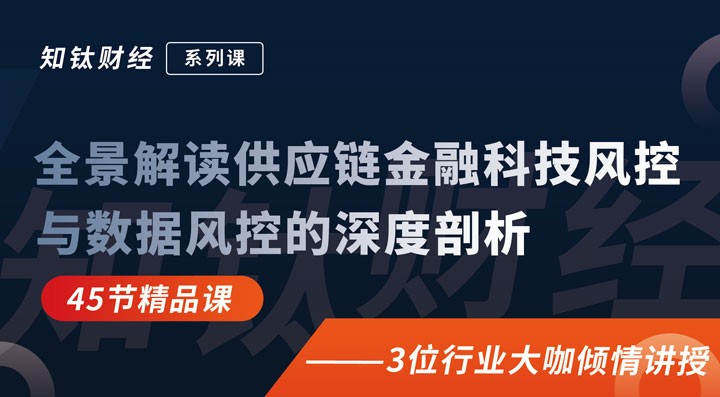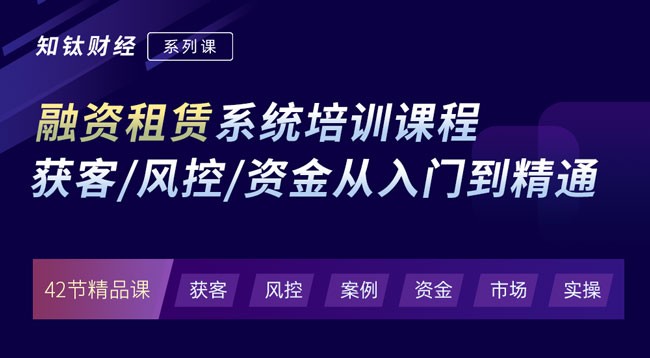潘光伟:评级不能只看“树木”不见“森林”
文/潘光伟 中国银行业协会专职副会长来源:中国银行业杂志近日,标准普尔(以下简称标普)宣布将我国长期主权信用评级从AA-降至A+,随后,又宣布下
文/潘光伟 中国银行业协会专职副会长
来源:中国银行业杂志
近日,标准普尔(以下简称标普)宣布将我国长期主权信用评级从AA-降至A+,随后,又宣布下调几家金融机构的评级。
当前,中国主要经济指标明显改善,信贷增速保持平稳,企业与银行系统信用风险防控有效,金融部门杠杆率与实体经济部门杠杆率企稳,在经济基本面稳中向好,银行业稳健发展,资产质量好于预期、好于同期,标普基于“亲周期”评级方法下调评级,是简单片面的。这种做法是用一把尺子的标准去衡量,有失公允,无异于“只看树木,不见森林”。
仅仅关注经济调整期的短暂波动
忽略了银行业宏观信用环境日趋良好
近年来,面对经济增长比较优势与要素禀赋的变化,中国政府着力推进供给侧结构性改革,经济增长基础更加稳固,经济增速、就业、物价、国际收支等主要指标好于预期。
“三去一降一补”效果明显,经济结构不断优化。钢铁产能退出6500万吨以上,煤炭去产能1.28亿吨。经济预期不断向好。制造业采购经理指数为51.7%,连续13个月处于景气区间。规模以上工业增加值增长6.0%,中小企业为7.6%。企业利润稳步增长。全国规模以上工业企业实现利润总额42481亿元,同比增长21.2%。主营业务收入利润率为6.09%,同比提高0.41个百分点,为2012年以来同期最高。改革驱动经济改善,企业盈利推动实体部门信用风险缓解。
仅仅关注信贷增长可能带来的风险
忽略了银行整体运营水平正在逐步改善
在向好的外部环境下,银行业总体运行稳健,银行业资产和负债规模稳步增长。2017年第二季度末,我国银行业金融机构境内外本外币资产总额为243.2万亿元,同比增长11.5%。银行业金融机构境内外本外币负债总额为224.9万亿元,同比增长11.5%。
信贷资产质量总体平稳。商业银行不良贷款余额1.64万亿元,不良贷款率1.74%,从2016年三季度开始,商业银行不良率分别为1.76%、1.74%、1.74%、1.74%,连续三个季度保持稳定。
利润增速有所回升。商业银行当年累计实现净利润9703亿元,同比增长7.92%,较上季末上升3.31个百分点。
风险抵补能力继续加强。商业银行贷款损失准备余额为28983亿元,较上季末增加747亿元;拨备覆盖率为177.2%,贷款拨备率为3.09%;商业银行加权平均核心一级资本充足率为10.64%,加权平均一级资本充足率为11.12%,加权平均资本充足率为13.16%。
流动性水平保持稳健。商业银行流动性比例为49.5%,人民币超额备付金率1.65%,存贷款比例为69.1%。
当前,监管部门把防范金融风险放到更加重要的位置上,我国银行业总体运行稳健,且盈利水平相对较好,有较强的风险抵补能力,不良资产规模在全球范围内也处于合理水平,加之外汇储备比较充足,因此可以预期,未来中国银行业会继续保持稳健运行,风险总体可控。
仅仅关注杠杆率较高问题
忽略了融资结构差异性下的风险可控
一段时间以来,我国的杠杆率水平有所上升,但绝不能因此进行简单的国际比较,而要看到我国的融资结构特点。我国是以间接融资为主的经济体,银行在融资体系中占据主导地位。同时,我国又是居民高储蓄率国家,目前,我国储蓄率达46%,居民部门的储蓄大量通过银行转化为企业部门债务,杠杆率偏高与此有较高关联度。
从债务分布上来看,我国居民和政府杠杆率相对较低。2016年末,居民杠杆率44.8%,政府杠杆率只有36.7%,其中中央政府16.1%、地方政府20.6%,与发达国家和新兴市场国家相比都不算高。
从债务偿付来看,我国债务对应着大量优质资产和稳定的现金流。无论是国有企业还是地方政府,都有许多有效益或可变现的资产,包括高速公路,城市地下综合管廊等,债务偿付能力总体较强,去杠杆的办法和手段较多。从去杠杆的效果来看,2015年以来,企业部门去杆杠取得显著进展,2016年经济整体杠杆率的增速下降了7个百分点,企业部门杠杆率的增速下降了9.2个百分点。
仅仅关注经济转型期的压力
忽略了银行业转型发展支持实体经济所取得的新成效
当前,在监管部门的引领下,银行业主动适应新常态,加大信贷管控力度,加快业务转型步伐,支持实体经济持续稳定增长的能力明显增强。
首先,资金脱实向虚势头得到初步遏制,银行业呈现出“两降”的良好趋势:一是商业银行同业资产与同业负债增速分别为-5.6%和-2.3%,同业资产余额和同业负债余额也比年初减少了3.2万亿元、1.4万亿元,同业资产、负债规模双收缩,这是2010年以来的首次。二是理财产品规模也出现下降,截至2017年6月,理财产品余额为28.4万亿元,同比增速较去年同期大幅下降35个百分点。此外,今年上半年新增个人住房按揭贷款占新增各项贷款比重的25.1%,较去年全年降低了10.9个百分点,比去年下半年的高峰期降低了19.9个百分点。
其次,对实体经济的信贷支持力度进一步加强,银行业呈现出“两升”的良好势头:一是涉农贷款同比上升。截至2017年6月末,全国银行业金融机构涉农贷款余额30万亿元,占各项贷款余额的25.2%,同比增长9.9%;二是小微贷款同比上升。小微企业贷款余额达到28.6万亿元,同比增长14.7%,约占全部贷款比重的25%,贷款户数1417.2万户,申贷获得率达94.7%,实现“三个不低于”目标。
仅仅重视过去的问题
忽略了政策层面去杠杆的决心和效率
第五次全国金融工作会议明确做好服务实体经济、防控金融风险、深化金融改革三项任务,守住不发生系统性金融风险是金融工作的永恒主题。标普将注意力过多地放在我国经济的历史问题上,没有切实观察到通过政策层面的推动,政府及社会各方在去杠杆、解决债务问题上表现出来的信心、决心和效率,也没有注意到由此而产生的积极效果与整体信用环境的改善与提升。
在货币政策方面,坚定执行稳健中性的货币政策。审慎精准把握,坚持不搞“大水漫灌”、量化宽松,始终保持货币政策不松不紧。2017年8月末,M2余额164.52万亿元,同比增长8.9%,增速比上年同期低2.5个百分点,M1增速更是下降了11.3个百分点,为14%。
在去杠杆方面,把国有企业降杠杆作为重中之重,果断抓好处置“僵尸企业”工作。国家对市场化法制化债转股已作出决策部署,并将抓好落实。
在严控地方政府债务增量方面,要求地方政府要加快转变发展理念,不能再走高负债拉动增长的老路。已经开始编制并公布地方政府资产负债表,强化依法行政和市场约束。结合推动国企混改,盘活存量资产,优化增量资产。加强审计问责,终身问责。
总的看来,标普忽略了我国供给侧结构性改革的进展、创新驱动发展战略的推进,在我国经济稳中向好,银行业稳健发展的情况下下调评级,其客观性、公正性令人置疑,也使得评级结果具有局限性,缺乏公信力。标普应对其评级方法和结构进行再评估,加以改进和完善,做到“既见树木,又见森林”。
以下为英文版:
CreditRatings should not miss the "forest" for the "trees"
Recently, the Standard & Poor's (S&P) announced to lower China's sovereign credit rating to A+ from AA-, followed by further downgrading its rating on several Chinese banks and financial institutions.
However, given the context of China's various improved economic indicators, mitigated system credit risks for the corporations and banks, stabilized credit growth, stabilized financial leverage and corporate leverage, the economic fundamentals of China are stable and sound, the banking industry is developing at a steady pace, the asset quality is better than the same period of last year and also better than expected. It is undoubtedly a simple, biased and unfair decision of S&P to downgrade the ratings base on the inappropriate "pro-cyclical" rating framework, which is as good as missing the forest for the trees.
I. First, it focused only on the temporary fluctuations featured by the economic transition period which China is currently in but overlooked the increasingly better macro credit environment for the banking industry.
Over the past years, facing with the changes in economic growth comparative advantage and factor endowment, Chinese government has made great efforts to promote structural reforms on the supply side to have the economy grow on a more solid basis. The major indictors, such as GDP growth, employment, price, international balance of payments, are better than expected. The effect of the strategy of "de-capacity, de-stocking, de-leveraging, cost-declining, remedy the short-board" is remarkable, and the economic structure continues to be optimized. The production capacity of steel and coal has been reduced respectively by over 65 million tons and 128 million tons. The economic outlook is growing better. The PMI index stood at 51.7%, remaining above the threshold level for 13 consecutive months. The added value of industries above the designated size increased by 6.0%, 7.6% for small and medium enterprises. The corporate profits are growing steadily. The national industrial enterprises above designated size achieved a total profit of 4.2481 trillion yuan, an increase of 21.2% year on year. Main business income profit margin stood at 6.09%, an increase of 0.41 percentage points, the highest since 2012 over the same period.
II. Second, it focused only on the possible risks from the growing credit but overlooked that the overall quality of the banking industry is improving step by step.
Thanks to the good external environment, the banking industry is having a sound development.The scale of banking assets and liabilities grew steadily. By the end of the second quarter of 2017, the total amount of RMB and foreign currency assets in China's banking financial institutions was RMB 243.2 trillion (about 36.91 trillion US dollars), up by 11.5% year on year. The total amount of RMB and foreign currency liabilities of domestic and foreign banking institutions was RMB224.9 trillion (about 34.13 trillion US dollars), up by 11.5% year on year. The quality of credit assets is generally stable. The NPL balance of commercial banks stood at 1.64 trillion yuan, with the NPL rate at 1.74%, which respectively was 1.76%, 1.74%, 1.74%, 1.74% in each quarter since the 3rd quarter of 2016, remaining the same for 3 quarters in a row. The profit growth has rebounded to some extent. The commercial banks realized a net profit of 970.3 billion yuan, an increase of 7.92% year on year and up by 3.31 percentage points over the previous quarter. The risk compensation capacity continues to strengthen. The balance of loan losses for commercial banks was 2.8983 trillion yuan, increasing by 74.7 billion yuan from the previous quarter. The provision coverage rate was 177.2% and the loan provision rate was 3.09%. The weighted average core tier 1 capital adequacy ratio of commercial banks was 10.64%, the weighted average tier 1 capital adequacy ratio was 11.12% and the weighted average capital adequacy ratio was 13.16%. The liquidity levels remain robust. The liquidity ratio of commercial banks was 49.5%, the RMB excess reserve rate 1.65% and the loan-to-deposit ratio 69.1%.
As the regulatory authorities in China attach more and more importance to guarding against the financial risks, given the above data, it is therefore reasonable to expect that China banking industry will continue to maintain a sound and stable development in the future with the risks under control.
III. Third, it focused only on the leverage level but overlooked the possibilities of risk control in a different financing structure.
For some time, the leverage level of China was on the rise. Nevertheless, it is by no means reasonable to simply compare it with other countries. Rather we should take into account the distinctive financing structure of China. China has an indirect financing-oriented financial system and the banking loans play a leading role in social funding. In the meantime, China is a country of high savings rate, which currently stands at 46%. The large amount of resident savings is transformed through banks into the corporate loans, which is likely to drive up the leverage ratio. From the debt distribution point of view, the resident and government leverage rates of China are relatively low. As of the end of 2016, the resident leverage was 44.8% while the government leverage was only 36.7%, of which 16.1% came from the central government and 20.6% from the local government, moderately low compared either to the emerging market countries or developed countries. From the debt repayment point of view, China's debt corresponds to a large number of high-quality assets and stable cash flow. Be it state-owned enterprises or local governments, they both have a number of profitable or realizable assets, including highways and urban underground integrated corridors. They have strong debt solvency and multiple ways and means of deleveraging. Judging by the effect of deleveraging, over the past year, the corporate sector has made significant progress in deleveraging, with the 2016 economic overall leverage growth rate falling by 7 percentage points over the previous year and the growth rate of corporate leverage down by 9.2 percentage points.
IV. Fourth, it focused only on the pressure during the economic transition period but overlooked the new achievements made by the banks in restructuring and supporting the real economy.
Currently, under the guidance of the regulatory authorities, the banking industry are taking the initiative to adapt to the economic "New Normal", increase credit control efforts and speed up the pace of business transformation. Their capacity of supporting the sustained and stable growth of the real economy has been significantly enhanced.
Firstly, there is a preliminary containment of the capital flow to virtual economy from the real economy, and the banking industry has seen "double declines" in interbank assets and liabilities as well as the wealth management products (WMP). On the one hand, the growth of interbank asset and liabilities was respectively -5.6% and -2.3%, double declining for the first time since 2010. The balances reduced respectively by 3.2 trillion yuan and 1.4 trillion yuan. On the other hand, the WMP has had a negative growth too. As of June 2016, the balance of WMP was 28.4 trillion yuan, growth rate plunged 35 percentage points from the year-earlier period. In addition, in the first half of 2017, the new personal housing mortgage loans accounted for 25.1% of the new loans, down by 10.9 percentage points over the previous year and 19.9 percentage points lower than the peak of the second half of 2017.
Secondly, the credit support to the real economy has been further strengthened and the banking industry has shown a good momentum of "double ups". The first up is in the growth of agriculture-related loans. As of the end of June 2017, the balance of agriculture-related loans from national banking financial institutions balance was 30 trillion yuan, accounting for 25.2% of the total loan balance, an increase of 9.9% year on year; the second up is in the growth of micro and small loans, the balance of which reached 28.6 trillion yuan, an increase of 14.7% year on year, accounting for 25% of the total loans, covering 14.172 million households, an application success rate of 94.7%.
V. Fifth, it focused only on the past problems but overlooked the determination and efficiency on the policy level to deleverage.
The fifth National Financial Work Conference of China has explicitly made serving the real economy, safeguarding financial stability and deepening the financial reform the 3 most important tasks of the financial sector. It was also emphasized that guarding against systemic financial risks should be the eternal theme of financial work of China. S&P, however, paid too much attention to the historical issue of China's economy but failed to observe through the policies the confidence, determination and efficiency of China to address the debt problem and leverage issues. Nor did S&P notice the resulting positive effects and the improvements and upgrades in the overall credit environment.
In terms of the currency policies, the Chinese government has adhered to a stable monetary policy in recent years. The government hasn't flooded its economy with strong stimulus measures. By the end of August, 2017, M2, a broad measure of money supply that covers cash in circulation and all deposits, rose 8.9% from a year earlier to 164.52 trillion yuan, the growth rate down by 2.5 percentage points over the same period of 2016. The M1 growth is down by 11.3 percentage points to 14%. In terms of deleveraging, the Chinese government has made the deleveraging of SOEs a top priority. The zombie companies are to be dealt with. China has also made deployments on the debt-to-equity swaps. In terms of control on the debt growth of local governments, it is required that the local government should change their development mindset and no longer pursue the growth rate with high debt. The local governments should compile and publicize their balance sheet. It can be combined with the SOE ownership reform, to revitalize the stock assets and optimize the incremental assets. Meanwhile, the accountability system shall also be strengthened.
All in all, S&P overlooked the progress of China in the supply-side structural reform and innovation-driven development strategy. Downgrading the ratings on China despite of its good economic fundamentals and stable banking industry will not only give rise to doubts over its objectivity and impartiality, but also make the decision appear limited and unconvincing. S&P should re-assess and refine its rating framework, so as to see both the trees and the forests.
 表情
表情

